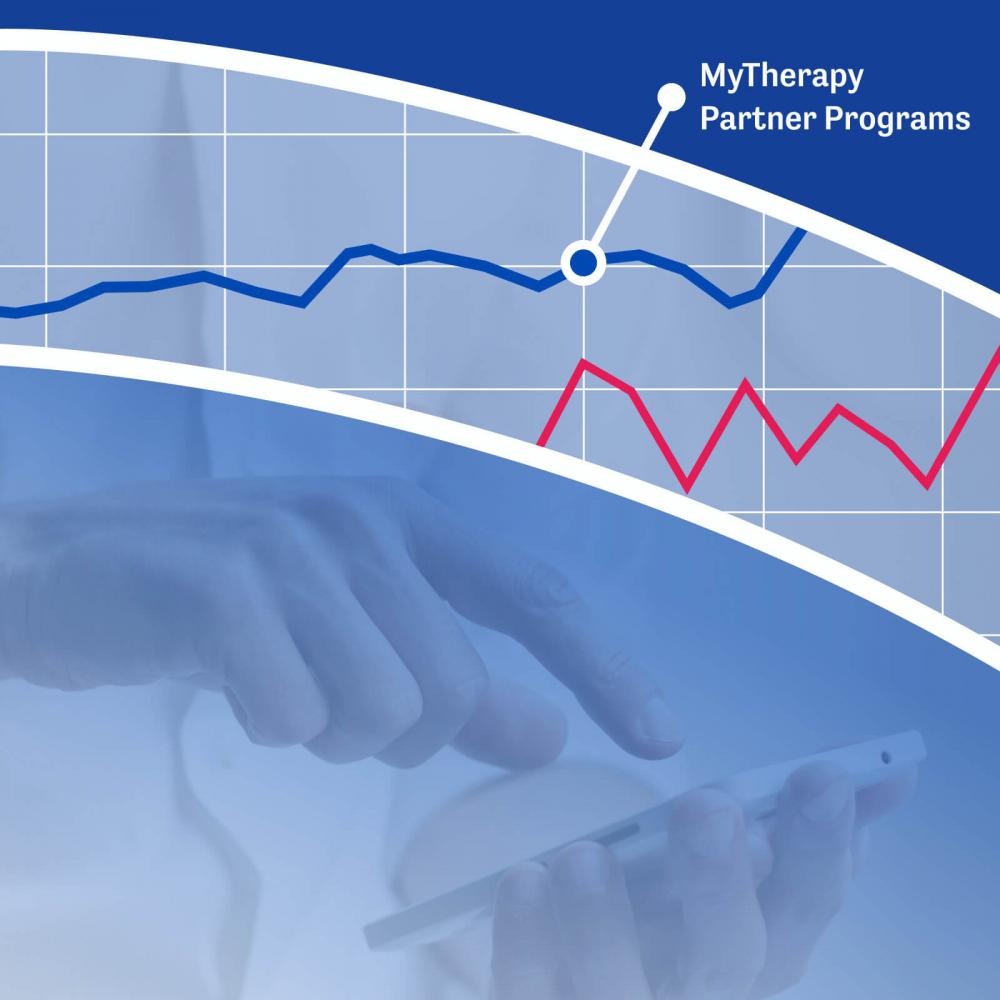Case Study: How MyTherapy Modules Boost Adherence (And Can be Launched in Just 6 Weeks)
We examined data from two of our partner modules and found that self-reported adherence rates among enrolled patients is 98.5%. Find out how we achieve these results and how you can launch a MyTherapy module to support your patients in as little as six weeks

- Self-reported adherence rates among patients enrolled in two MyTherapy partner modules was 98.5% over seven months
- The results represent a significant improvement on typical adherence rates, which can both improve patient outcomes and increase sales for pharma
- With our platform approach, we can launch partner modules on MyTherapy in as little as six weeks (read on to see the timeline)
Treatment adherence is a well-established problem, leading to poorer patient outcomes and costing every stakeholder within the healthcare industry, including pharma. Digital tools have long been touted as potential drivers of improving adherence by addressing many of the underlying issues; however, many digital initiatives still fail to have any measurable impact. In this post, we look at self-reported adherence data from patients enrolled in two of the modules we run for pharma partners on MyTherapy. Read on to see the results and how we can launch modules on the MyTherapy platform in as little as six weeks.
Click here to scroll down to our six week timeline for launching partner modules.
MyTherapy Partner Module Data: The Results
The partner modules we run on MyTherapy are usually designed for patients taking specific medications. Users taking these medications can choose whether to enable the module or not, meaning we typically have two groups that we can directly compare: those who enable the module and those who do not. The below graph compares the self-reported adherence rates (defined as confirmed intakes within the MyTherapy App relative to the scheduled reminders) among these two groups across a seven-month period.
![A graph showing the self-reported adherence rate among MyTherapy users with partners modules enabled [98.48%] and users with the partner module not enabled [92.51]](https://www.smartpatient.eu/media/pages/blog/how-mytherapy-modules-boost-adherence-pharmas-patient-communities/b418c3bac9-1670864106/mytherapy-module-versus-non-module-users-adherence-rates.jpg)
As you can see, adherence rates among non-users of the modules are already good, with users still benefiting from regular MyTherapy reminders. Adherence rates among these users between April 2022 and October 2022 averaged 92.51%.
Module users, however, perform even better, with an average adherence rate of 98.48%.
This represents an increase in adherence of 6.5% for module users over non-module users.
Considering MyTherapy users already report excellent levels of adherence, the improvement in adherence can be even more profound among patients who do not currently use any form of digital support. For example, if a drug has an adherence rate of 70%, increasing it to the levels demonstrated by MyTherapy users would represent an increase of over 40%.
Partner Modules on MyTherapy: The Benefits of a Platform Approach
The above results demonstrate the impact digital tools can have regarding medication adherence. The foundation for these results is the MyTherapy platform, which has been developed over hundreds of iterations to meet the daily needs of people taking regular medications of any nature.
The drug-specific partner modules we develop are essentially apps that run on MyTherapy, which is why we often describe MyTherapy as the Operating System for Patient Engagement. Often, these ‘apps’ require more in the way of configuration than development, meaning they can be ready for launch much faster than a program developed from scratch.
This is how we can launch such modules in as little as six weeks. Still skeptical? Check out the timeline below to see how it can be done. If you want to speak to us about launching a module on our MyTherapy platform, don’t hesitate to book a meeting.






